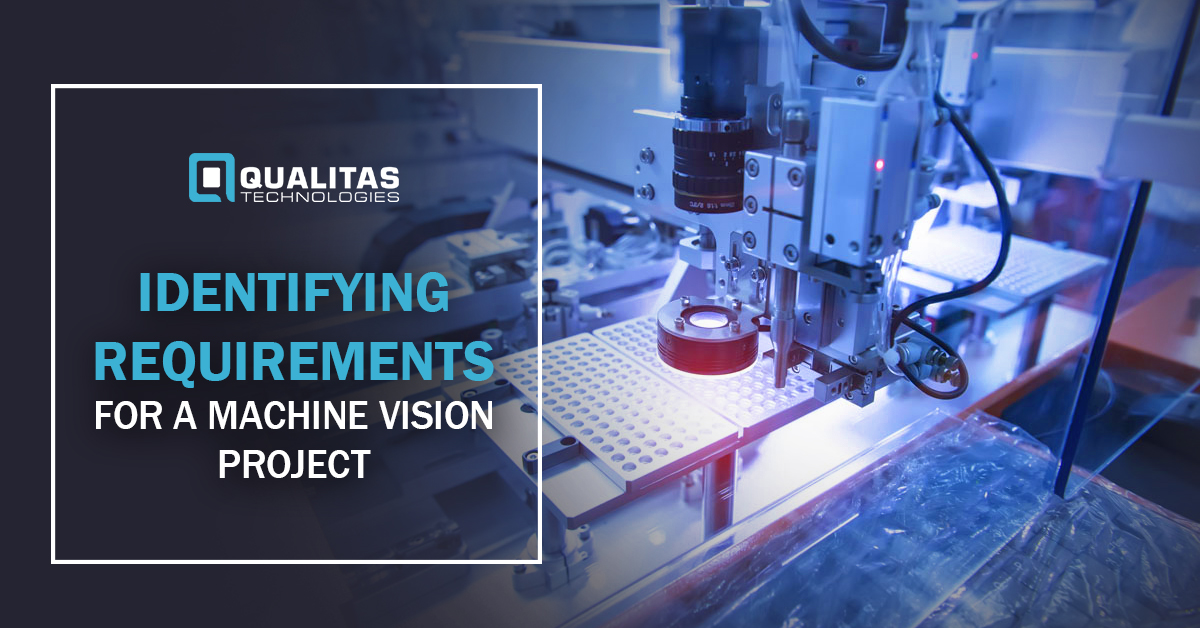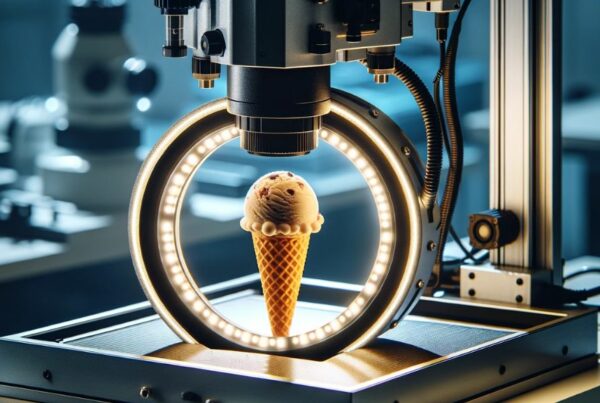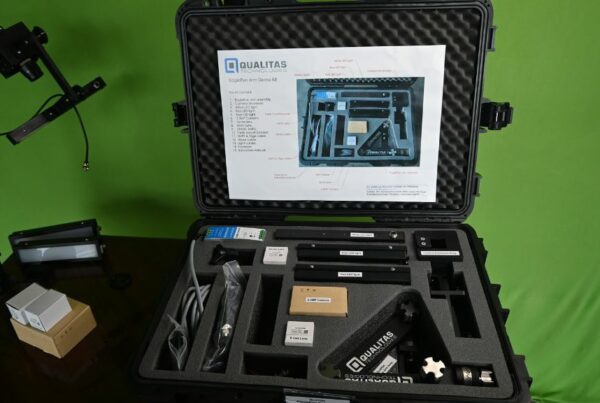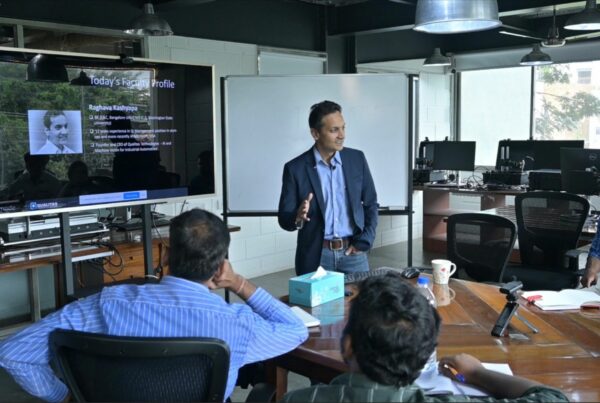
Significance of Machine Vision
Machine Vision devices equipped with AI, can precisely observe and analyze the minutest of data, think cognitively and deliver pinpointed solutions. Machine Vision has grown popular for its cost optimizing, user-friendly, accurate, and agile functions.
Since its inception, Machine Vision technology has matured quite fast. According to Vision Online, in 2017, the global machine vision market was valued at $7.91 billion. It is expected to achieve a value of $12.29 billion by 2023. This calculates to an annual growth rate of 7.61%. These statistics are tell-tales that scream the significance of Machine Vision.
Many industries have already incorporated Machine Vision tech and several others have made collaborations with IT giants to tailor this technology to their advantage. This amazing, advanced tech could indeed be a game-changer for your enterprise.
Also, Read Different Stages of a Machine Vision Project
Why so many Machine Vision Projects fail?
Despite the revolutionary capabilities of Machine Vision, not many models make it to the production stage. A humongous number of projects fail to deliver due to several reasons, some of which are mentioned below
- Unrealistic expectations
Machine Vision is undoubtedly a powerful technology but it is important to recognize the areas in which it can be implemented and what are its limitations. Wavering expectations will take you nowhere.
- Underestimating the need for quality equipment
While Machine Vision technology is picked up enthusiastically, necessary equipment is often, not up to the mark. Application needs should dictate the quality of the equipment needed and not tight budgets. Changing the equipment after complete installation can prove to be an arduous and expensive task.
- Incomplete evaluation
Even the smallest equipment should be verified properly and a thorough analysis should be carried out before purchasing the components. The best way to do this is to conduct onsite and diligent proof of concept. Neglecting this can lead to the incorporation of incompetent machinery and potential pitfalls.
Also, Read Machine Vision: Projected Growth And The Industries It Will Affect
Steps to Acquire the Necessary Requirements for a Machine Vision Project
- Defining clear inspection goals and business objectives
Perhaps, the most crucial step, before setting up your Machine Vision system, is to define realistic expectations and clear business strategies on how to optimally use these systems. Several parameters related to inspection like the details to be inspected, the necessary equipment, the algorithm of inspection, and the inspection time must be fixed comprehensively.
- Perform the crucial ROI assessments
Automation in spite of increasing productivity might not always be a profitable investment. If the involved complexity and investment are more than the return in short term, perhaps it is not wise to involve Machine Vision systems. Perform the ROI assessments diligently and ensure that incorporating Machine Vision pays for itself by streamlining the processes and reducing overall expenses.
- Acquire the requisite skillset
The skills needed to assess its performance continuously and to ensure its smooth functioning might be scarce and possibly, absent in your existing workforce. You can enhance your employees’ skills by training and educating them on the basics of AI and Machine Vision technology. The goal is to be skilled enough to assess and not to implement.
- Choose the right illumination systems
Apt illumination is indispensable for any Machine Vision system. Strictly speaking, the vision systems don’t ‘see’ the subject itself but actually its digital image. The images must be consistent and have just the right contrasts for the flaws to be visible. A variety of illumination techniques are available like backlighting, dark-field, bright-field, directional, etc. Lighting vendors will willingly provide all the necessary consultation to choose the apt technique.
Also, Read Types of Illumination Techniques in Machine Vision
- Set up the optics
Two key parameters to be considered while selecting the lens and camera are Field of View and Resolution. Other parameters to be considered while selecting the lens are depth of field calculation and the distance between the lens and the object to be inspected.
- Choose the image acquisition hardware and material handling equipment
The choice of image acquisition hardware depends largely on the subject. Two major factors to be considered are the camera and the image acquisition rate. An important decision is choosing a monochrome or a color camera. While a color image is visually more desirable and helps differentiate various components, it requires more processing time. Material handling equipment includes x-y positioning stages, conveyors, robotic arms, motion-control hardware, and software.
Also, Read IMAGE ACQUISITION COMPONENTS
- Conduct POCs
A proof of concept goes a long way in making a Machine Vision project successful and meet the expectations, without going over-budget. It is imperative to verify with actual parts in a simulated environment and identify any potential pitfalls, beforehand. It is recommended to conduct a paid POC, especially for first-timers. Don’t expect returns with the POC itself, but learn as much as possible to avoid future issues. POCs are crucial for the success of your systems and hence, must be performed diligently and without any shortcuts.
Several corporations have started adopting AI in Transport and Logistics. Numerous others have made collaborations with software companies to incorporate AI and create systems tailored to their requirements. Some of such corporations are:
- Continental expressed intentions of developing delivery robots at the CES 2019.
- NVIDIA and Mercedes – Benz have collaborated to develop AI in cars.
- Huge corporations like Wal-Mart, Nike and Ikea have already developed and started using automated warehouses.
- Automated taxis have already started functioning in Tokyo, Japan.
- S. logistics have started incorporating autonomous trucks which, according to a Mckinsey report, will reduce the maintenance and administration costs by a significant 45%.
Also, Read 7 APPLICATIONS OF MACHINE VISION
Conclusion
Despite the fact that Machine Vision is powerful tech and gifts a plethora of benefits to many sectors, it is of paramount importance to perform ROI assessments and ensure that for you, as well, it drives business value and tangible monetary benefits. Acknowledging the significance of requirements and carefully implementing them is necessary for a successful and thriving Machine Vision system. Remember that negligence in components that truly matter can prove to be quite devastating in the future.
Register For Our Upcoming Free Webinar





